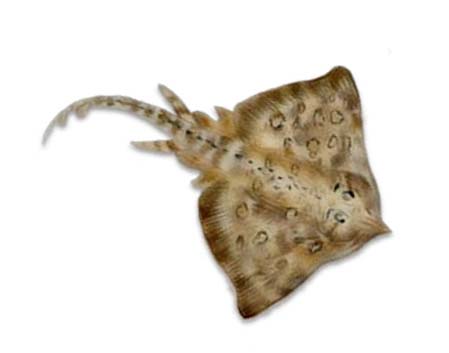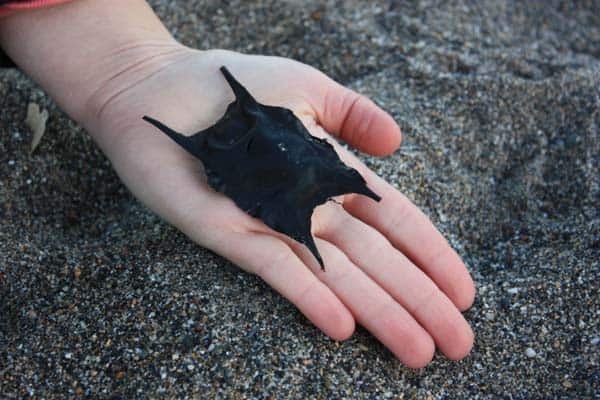
Artwork: Sinead Begley
Fast Facts
Scientific Name: Raja clavata
Other Common Names: Thornback Skate, Maiden Ray, Rough Ray.
Gaelic Names: Scite garbh, Liopa rotha, Rotha garbh.
Conservation status: Listed by the World Conservation Union (IUCN) as Near Threatened globally.
Distribution: From West Africa to Scandinavia throughout the north east and eastern central Atlantic. It is also found in the Mediterranean and Black Seas.
Habitat: Found over muddy, sandy and gravel areas, rarely on rough ground. Inhabits shelf and upper slope waters up to 1020 m in depth, although most common in coastal waters between 10 – 60 m.
Lifespan: Maximum reported age is 15 years.
Diet: Bottom dwelling creatures, especially crustaceans and small fishes.
Predators: Seals, humans.
Reproduction: An egg-laying species of ray or skate, with females laying up to 170 eggs per year (although most produce around 48-74). Adults may move in to shallow nursery areas to spawn and lay their eggs in winter, spring or summer, depending on their location. Eggs are deposited in pairs and pups hatch after 4-5 months.
Thornback Ray eggcases are frequently washed up on beaches around Ireland and Britain.

This eggcase has lateral keels and horns that extend for about half the length of the capsule. The purse fills an adult’s palm.
If you find one of these eggcases on the seashore, please do report it to your local shark and ray sightings scheme. You can also learn how to identify any eggcases you find here.